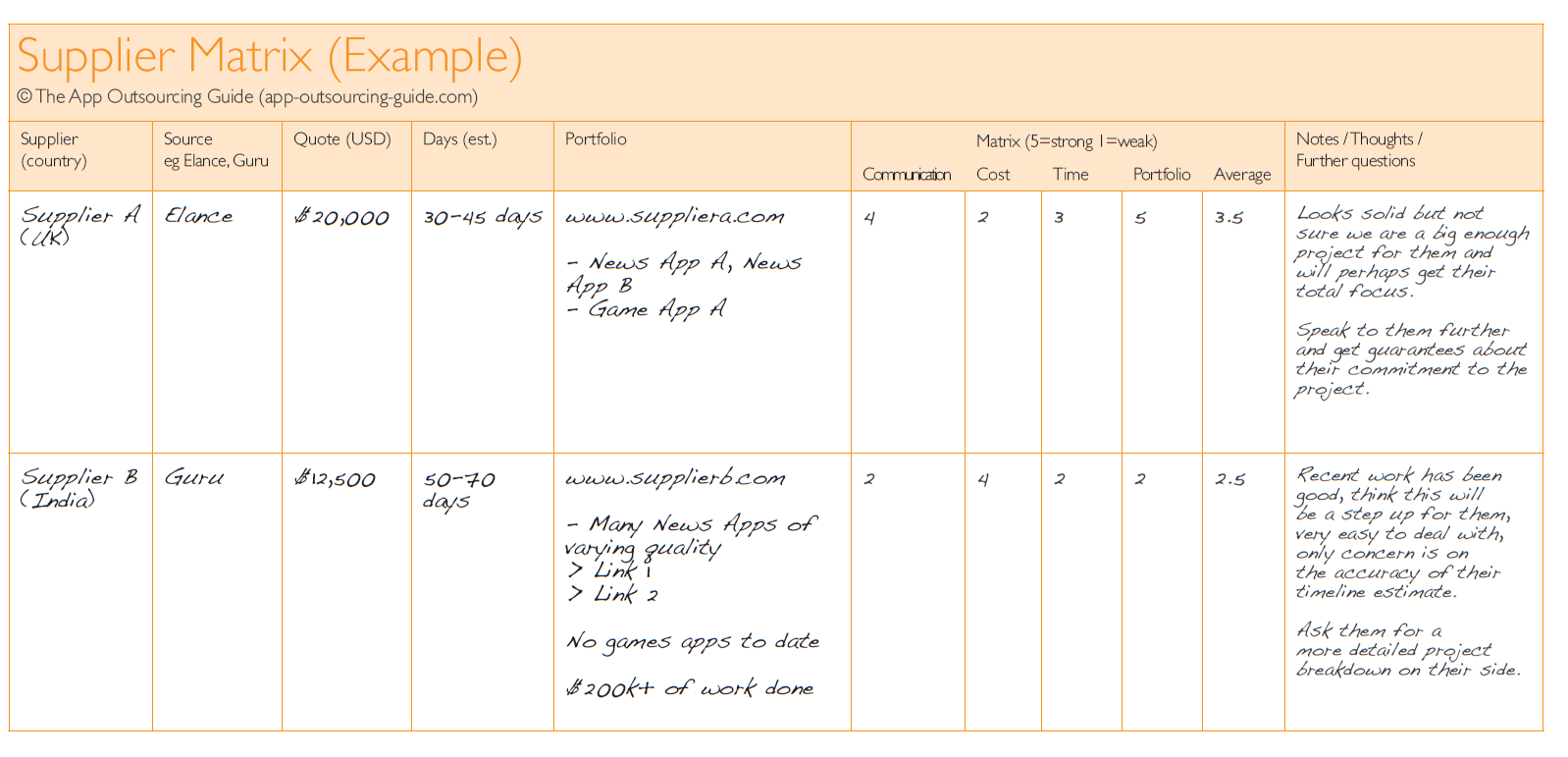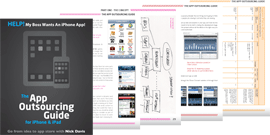Once you’ve posted your proposal on Elance / Guru (or contacted your preferred suppliers) then you can sit back and wait for the emails to arrive. Once you have a few, start to go through the responses and see who you prefer. Don’t be afraid to reply back with lots of questions and make sure you get recent examples of their work.
If you are using Elance/Guru, you may get a large number of responses. Although there are no absolute rules for picking the superstar suppliers from the also-rans, a good starting point (if they are from Elance/Guru) is to see how much money they’ve earned through the site and the ratings that previous clients gave their work. Even more importantly, take a look at their recent portfolio (if they don’t have one, then ask!) including downloading any apps. Really go through each app they have made, time invested in this now will definitely be of benefit later.
I usually find the suppliers I get the best results from are the same ones that have taken the time to provide a detailed answer to my questions / brief, and also seem to show some genuine enthusiasm and interest in the project in their reply.
It may help when going through the responses to build a Supplier Matrix spreadsheet of all the companies, recording their answers to key questions, so you can make a comparison later. An example of such a spreadsheet can be seen on the next page. If you wish to use or adapt the same template there is a blank version at the back of the guide or a spreadsheet (.xls format) version you can download from the Members Area (under Resources) of app-outsourcing-guide.com
A basic Supplier Matrix example
Once you’ve narrowed it down to four or five strong options, start to get into more detail and see who provides the most satisfactory responses and assurances. I would pay particular attention at this stage to the speed and quality of responses (allowing for time zone differences). Don’t put up with anyone who is not unfailingly helpful and tolerant to your questions as those qualities will be needed in abundance later in your project when the pressure is on.
After a few email exchanges and narrowing down your longlist to a shortlist, you will probably now want to speak to the final two or three companies and see how they stack up. A 30 minute phone call can clear up a lot of issues that may take days of back and forth over email. If you need to do this with multiple stakeholders who are not all in one place then try an online conference call using a service such as gotomeeting.com
Some general points from experience. A good supplier will:
- Be up-front about challenges they see in your project;
- Show great examples of recent work (and may explain what they learned from the project and what they would do differently next time);
- Produce work of the highest quality (remember the supplier may not have been involved in the marketing of an app so judge the quality of the app over it’s position on the App Store);
- Reply when they say they will reply, call when they say they will call. You need to know their word means something and they can be relied on.
Possible supplier red flags may include:
- Replying to your initial tender with just a short answer and/or clearly not having read your brief;
- Ignored specific questions you may have asked in your initial proposal, showing a lack of attention to detail;
- Hesitant or not able to show recent apps of high quality on the App Store.
- You may also want to ask how the project will be managed and who and how many people will be working on it, particularly if time is a concern. Questions might include:
- How many developers do they expect to have working on the project every day?
- Who will be the project manager/point of contact?
- What hours will he or she be available (particularly if on a different time zone)?
- How often can I expect test builds of the app? Every day?

